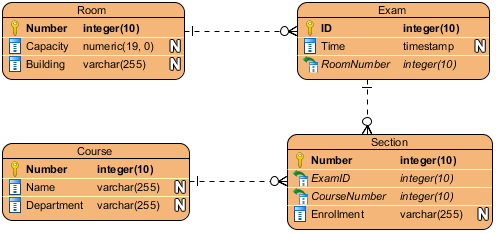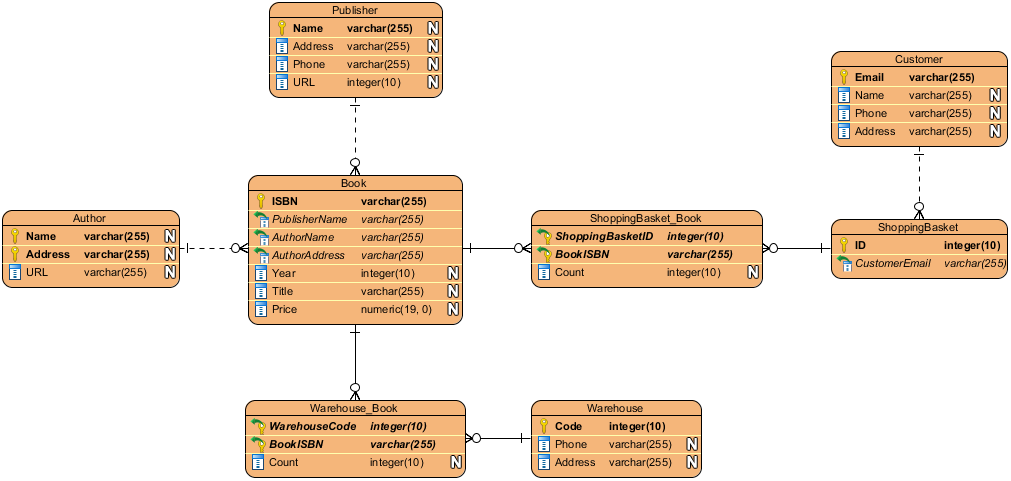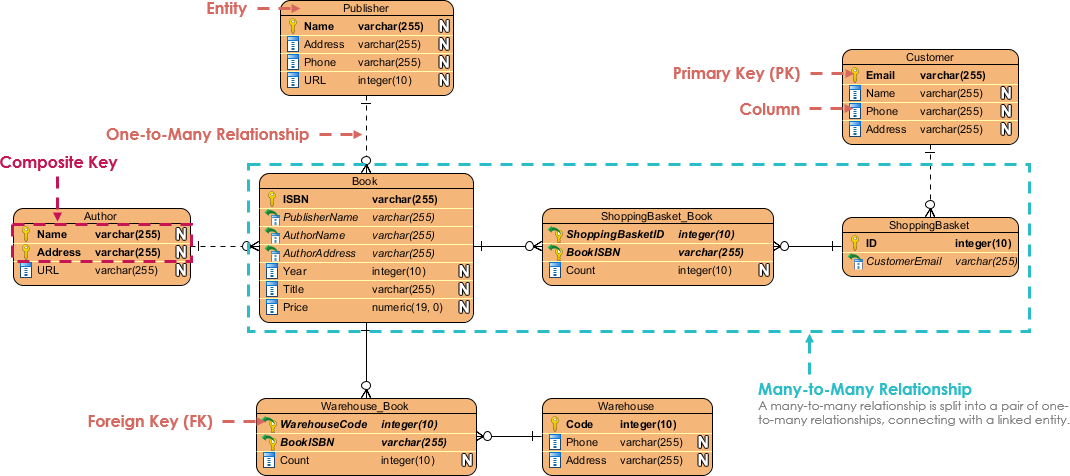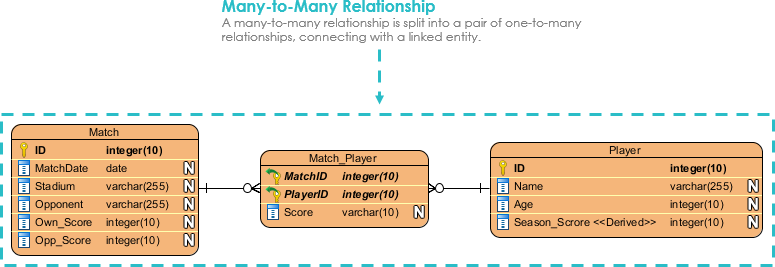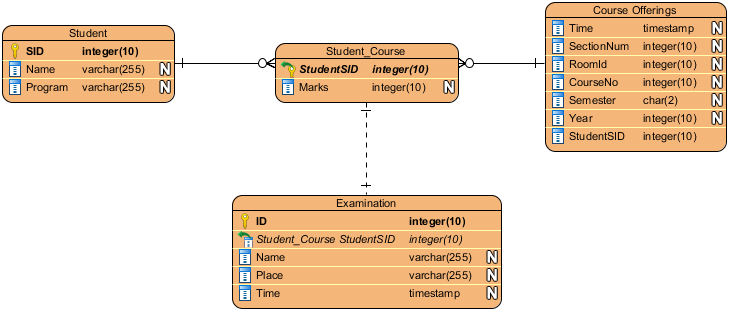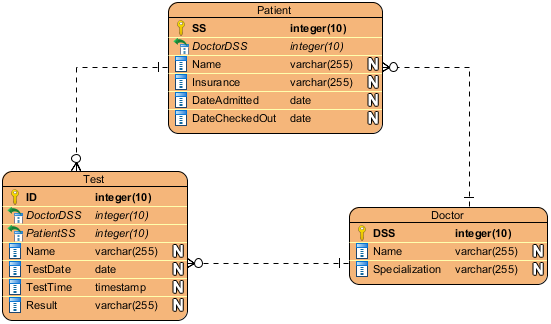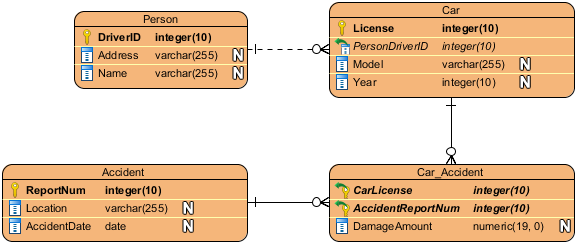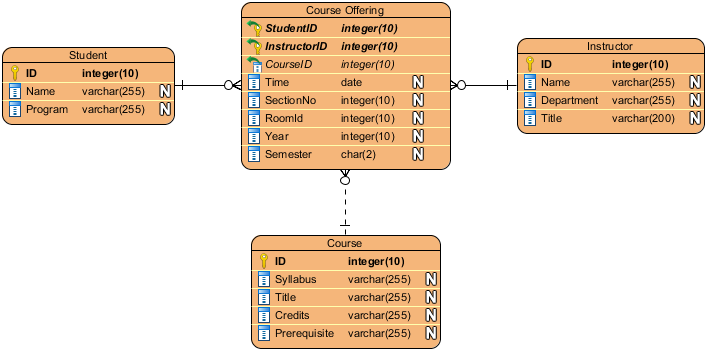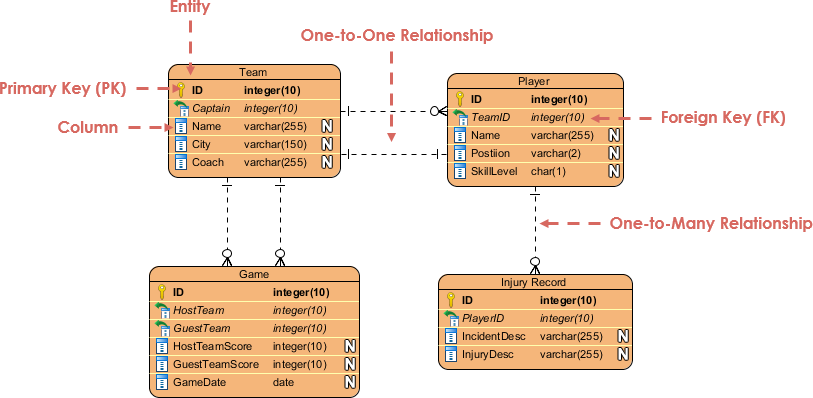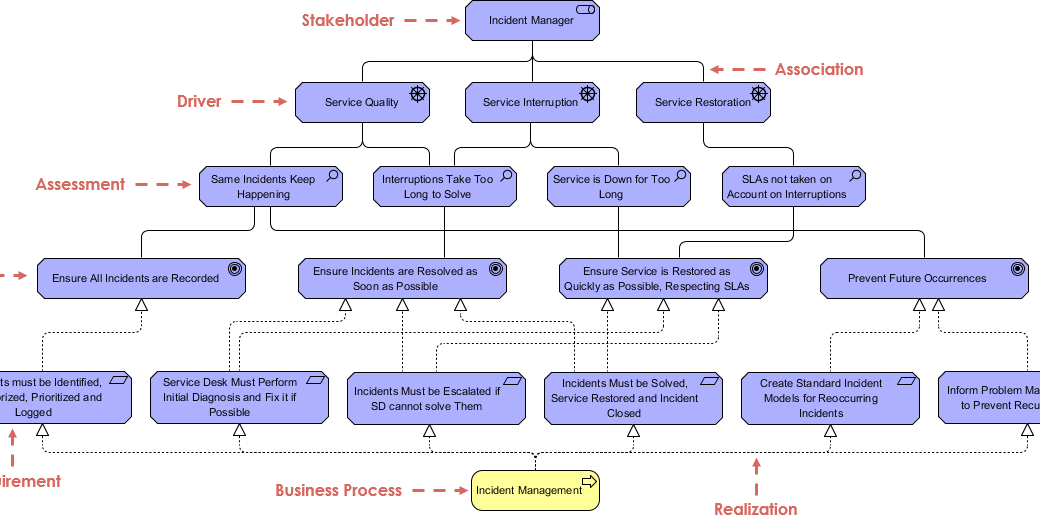This is an ERD for a company with the following details:
1. Company organized into DEPARTMENT. Each department has unique name and a particular employee who manages the department. Start date for the manager is recorded. Department may have several locations.
2. A department controls a number of PROJECT. Projects have a unique name, number and a single location.
3. Company’s EMPLOYEE name, ssno, address, salary, sex and birth date are recorded. An employee is assigned to one department, but may work for several projects (not necessarily controlled by her dept). Number of hours/week an employee works on each project is recorded; The immediate supervisor for the employee.
4. Employee’s DEPENDENT are tracked for health insurance purposes (dependent name, birthdate, relationship to employee).
Import into your Project
Open diagram in Visual Paradigm [?]Copy the URL below, paste it in the Open Project windows of Visual Paradigm and press Enter to open it |
Posted by:


